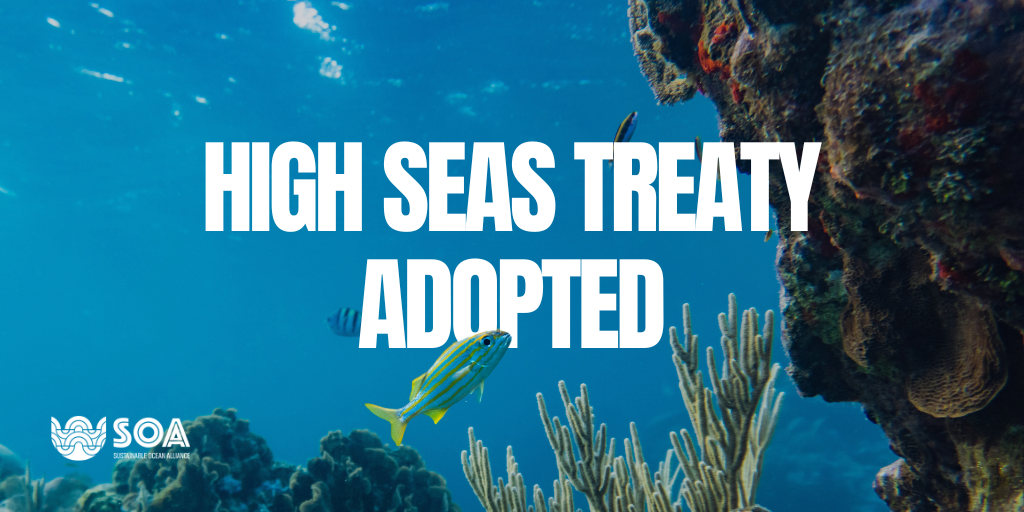On June 19, 2023, The United Nations officially adopted the first-ever international treaty protecting the High Seas. Learn more about what this historic win means for the ocean.
What is the High Seas Treaty?
The Biodiversity Beyond National Jurisdiction (BBNJ) Treaty, commonly known as the High Seas Treaty, is an international, legally-binding agreement to address the conservation and sustainable use of marine biodiversity in areas "beyond national jurisdiction" — accounting for two-thirds of the global ocean.
On March 5, 2023, after nearly two decades of fierce negotiations, this treaty was initially agreed upon by the United Nations to ensure 30% protection of the ocean by 2030.
On June 19, 2023, this historic treaty was formally adopted by all 193 UN member states.
RELATED | Read SOA Founder & CEO's Linkedin Article on the Adoption of the High Seas Treaty
Key Ocean Protection Highlights
The new agreement contains 75 articles that aim at "protecting, caring for, and ensuring the responsible use of the marine environment, maintaining the integrity of ocean ecosystems, and conserving the inherent value of marine biological diversity."
This Treaty will establish large-scale Marine Protected Areas (MPAs) in international waters, which protect biodiversity beyond the 12-mile region currently protected by individual countries.
It also includes guidelines to measure the environmental impacts of high-sea activities (like fishing and deep-sea mining) and requires countries to present an assessment of those impacts to the UN about any activities that the country is doing in international waters.
What is Next?
Before the High Seas is fully protected under this Treaty, key details will be ironed out over the coming two years, and the treaty still needs to be ratified by at least 60 members to go into effect.
These include the creation of technical committees, additional capacity building, transfer of marine technology, allocation of funds, and cooperation with existing, industry-governing institutions.
A Moment of Hope for the Future of our Ocean
The adoption of this monumental Treaty means historically destructive activities like overfishing, deep-sea mining, ocean pollution, and more will be strictly regulated and potentially even outlawed—giving us hope for the future of our ocean, planet, and humanity itself.
While the continuous fight to save our ocean is not over, we can sigh a temporary breath of relief that international conservation and ecosystem protection is possible — and can even become legally binding.
Moral of the story?
Activism works. Together, we are actively creating the sustainable, equitable future we both need and deserve.




Comments